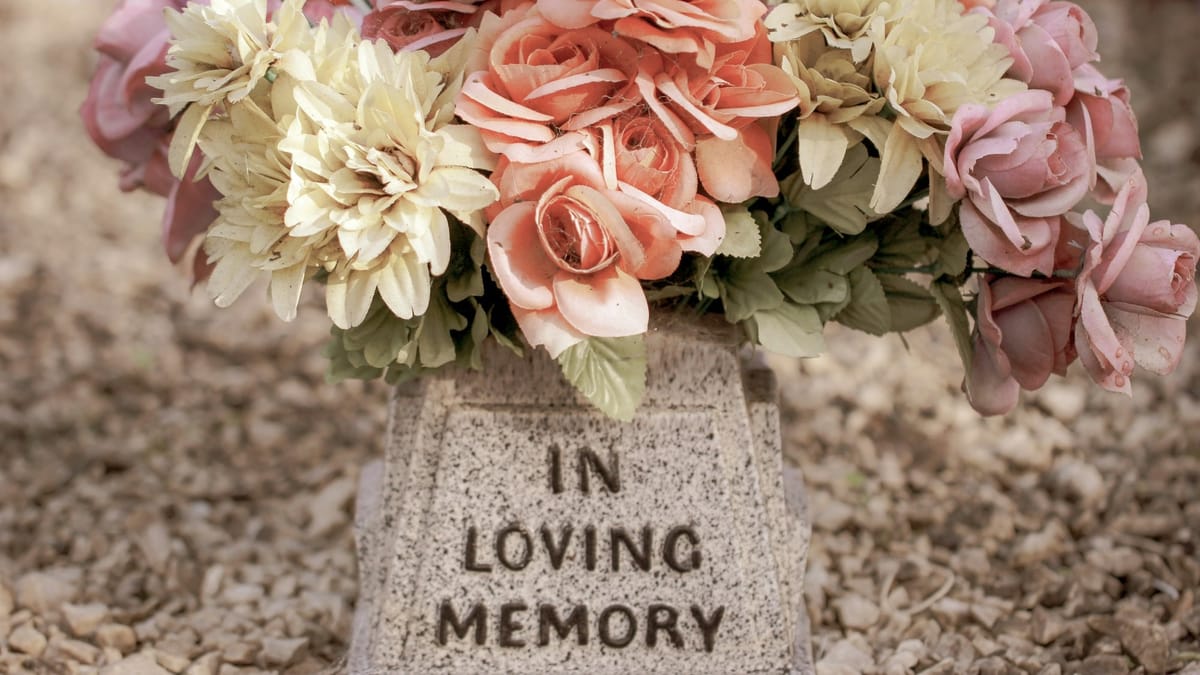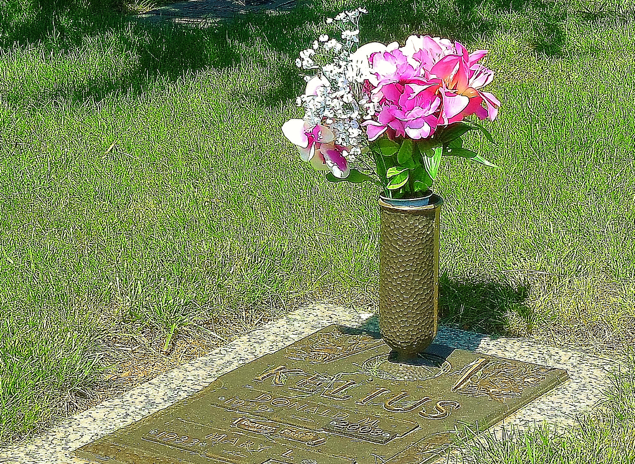What are the 5 Stages of Grief?

Grief is a natural response to loss and can come in many forms. It is an emotional process of accepting the reality of a loved one’s death or other traumatic event, and seeking to make sense of it. Grief expresses itself uniquely for each person, and can be experienced in many ways – through feelings of sadness, anger, guilt, confusion, and difficulty adjusting to a new reality. As a result, it is important to understand the five stages of grief so you can better identify and manage your own emotions.
The five stages of grief – shock, denial, anger, bargaining, depression, and acceptance – were first introduced by Dr. Elisabeth Kübler-Ross in her renowned 1969 book, On Death and Dying. She argued that these stages are not linear, but rather overlapping cycles of emotion. Her work is still highly regarded today as a valuable starting point for understanding and navigating the journey of grief.
The five stages of grief can be a helpful tool to normalize the wide range of emotions you may experience during this time. They provide an outline of what to expect during the grieving process, although it is important to remember that everyone's experience is unique and the timeline for processing grief varies from person to person. Understanding the five stages of grief can help you become more aware of your own emotions as you navigate this difficult journey.
Why is it Important to Know the Five Stages of Grief?
Grief is an emotional response to a significant loss and it affects us in many ways. It is natural for us to feel emotions like sadness, anger, and shock, but these feelings are only temporary. Knowing the five stages of grief can help us work through our emotions so that we can move forward in life.
Life is full of struggles, and as sad and painful as they can be, we must learn to accept them and eventually find peace. Grief is a process, and understanding the five stages will help us make sense of what we are feeling and be better able to cope with our emotions.
The five stages of grief were first introduced by Swiss-American psychiatrist Elisabeth Kübler-Ross in her 1969 book On Death and Dying. She identified five distinct stages: denial & isolation, anger, bargaining, depression, and acceptance. Each stage is marked by a different emotion or set of feelings, and each requires its own approach to healing. Understanding these stages can help us recognize our feelings, identify what we need to do to heal, and make adjustments to our lives.
Grief is often seen as a linear process, but it doesn’t always follow this path. In fact, it can be messy and chaotic. People may progress through some stages more quickly than others, revisit stages, or skip certain stages entirely. While the five stages of grief provide a framework for understanding and managing our emotions, it is ultimately up to the individual to determine their own pathway to healing.
Grief is an emotional response to loss of some kind and it can occur in various forms, from the death of a loved one, the end of a marriage, or the loss of a job or home. Everyone experiences grief differently depending on their individual circumstances, but most people go through a similar set of stages. The five stages of grief have been identified as denial & isolation, anger, bargaining, depression, and acceptance. In this section, we'll discuss what these stages mean and why it's important to understand them.
Stage One: Denial and Isolation
During this stage, a person may feel numb or disconnected, and they may deny that the loss has occurred. They may even push away those who are trying to help them deal with the situation. Common feelings include shock, disbelief, fear, and confusion. It is important to remember that denial is a natural defense mechanism and that it can be used to protect someone from getting overwhelmed by the emotions they are feeling.
At this stage, it’s common for a person to isolate themselves from friends and family. They may feel like they don’t want to be around anyone and that no one can understand what they’re going through. They may also start engaging in unhealthy habits such as drinking or using drugs to cope with the loss. While this behavior may provide a temporary escape, it is important to find healthy ways to cope with the emotions. Talking to a therapist, joining a support group, or participating in activities that bring joy and meaning to life can all help manage the difficult feelings associated with grief.
Stage Two: Anger
The second stage of grief is anger. This stage usually follows denial and isolation, which is why it is often difficult to begin to address the emotions that arise. It is important to remember that anger is a normal emotion during grief and can often be very intense.
It is common to feel angry at yourself, the world around you, and the reality that you are experiencing this loss. You may become angry at those around you who you perceive as not understanding what you are dealing with or not providing the support to help you through your loss. However, it is important to remember that everyone grieves differently and that everyone expresses their grief in different ways.
During this stage of grief, expressing your anger without harming yourself or others is essential. It is important to find healthy outlets such as journaling, talking to supportive friends, or physical activities like running.
It can also be helpful to reflect on why you are feeling anger. Is it because of the way you were treated by someone? Is it because you feel helpless in the situation? Identifying why you're feeling angry can help you to process and move through these emotions more effectively.
Additionally, it is important to not view yourself negatively for feeling angry or guilty for not being able to control your emotions. It is part of the grieving process and it is necessary to give yourself permission to feel your feelings even when it is uncomfortable.
If you find that your anger becomes overwhelming or dangerous, seek out professional help or support from those around you. You do not have to struggle through this alone.
Stage Three: Bargaining
Grief is a complex and difficult experience, so it can be helpful to understand the various stages associated with the grieving process. One of the stages of grief is Bargaining. This stage occurs when an individual attempts to make deals with a higher power to avoid their current painful reality.
During this stage, people generally try to barter to bring back a lost loved one, or to change the situation that caused the death. They may also make promises about future behavior, if only they could turn back time. People may find themselves making deals such as saying ""If only I can get through this, I will never do X again"".
This bargaining stage can result in feelings of intense guilt and sadness. Individuals may also feel frustrated, because there is no real resolution to their grief during this stage. The bargaining stage is often intertwined with the Denial and Isolation stage, as individuals may believe that they can keep their loved one with them by playing out different scenarios in their minds.
Some individuals may take out their frustration at this stage by lashing out at those around them, as they feel that nothing can help the situation. Others may withdraw from the world as they struggle to come to terms with what has happened. It is important to note that everyone processes grief differently, so these coping mechanisms can be as varied as the individuals experiencing them.
During this stage, it is important to remember that loss will always be a part of life. There is no way to eliminate pain and suffering from life completely, however, this does not mean that we cannot manage our emotions and choose to focus on other aspects of life as well. Finding comfort in the positive times spent with the person who passed away, instead of imagining alternate scenarios, can be beneficial in helping to cope with grief.
It is also important to seek out support from family and friends during this time. Talking about grief can be helpful in processing it, as it can provide individuals with space to express their feelings. Additionally, connecting with others who are going through similar experiences can help provide comfort. It is important to know that you are not alone in your journey, and support can help lead the way.
Stage Four: Depression
Grief can lead to depression, a feeling of intense sadness. In the fourth stage of grief, it is totally normal and ok to experience some level of depression. Although it may be difficult to see during this time, you will eventually recover from depression.
When we are in the midst of grief, we often feel helpless and alone. Depression can lead to feelings of hopelessness and worthlessness. This can manifest physically as well. You may have difficulty sleeping, have an appetite change, or difficulty concentrating on everyday tasks. It is important to note that these feelings are not a sign of weakness and that seeking help is often essential.
Depression can last for varying lengths of time depending on the individual and their coping skills. However, it is often necessary to reach out to friends, family, or professionals for help. Professional help such as therapy or medications can be very beneficial in helping to manage depression. Additionally, other approaches like mindfulness, physical exercise, and lifestyle changes can also be beneficial.
The most important thing to keep in mind is that you are not alone in this. There are many people who have gone through similar experiences and can offer guidance and support. It can be very helpful to join a support group or seek professional help.
Stage Five: Acceptance
Acceptance is perhaps the most difficult stage of grief to process. It is important to remember that acceptance does not imply that the pain of loss has gone away, instead it is recognizing the reality of your loss and the fact that you will have to move forward.
The goal of acceptance is to let go of the hurt and pain and begin to cope with life without the person or people you love. It is also a process of accepting the changes that the loss has brought about. As much as you may want to restore everything to how it once was, it is important to recognize that life will never be the same.
The process of coming to accept one’s losses can take a very long time. Depending on the individual, some may never reach full acceptance, but instead live in a state of ambivalence. There can be moments of happiness and sadness, moments of moving forward but also moments of going backwards.
It is important to keep in mind that acceptance is not a sign of weakness, but rather a strength that you are able to recognize your own new reality. It is also important to note that the grieving process is unique to each individual, so the length of time it takes to accept a loss varies greatly. It is always important to reach out for help if you are struggling with this stage.
Differentiating Loss
Grief can look and feel different for everyone, depending on their age, race, gender, culture, religion and personal circumstances. Although the stages of grief are universal, each individual’s experience of them is different. People of different ages have different ways of facing loss and can cope differently. Younger people may resort to denial more than adults, while older people might be more likely to be in shock.
It’s important to understand the cultural differences in how grief is expressed. For some cultures, the bereaved can show outward signs of grief—such as screaming or breaking down in tears—while for others this type of behavior is not considered appropriate. Depending on the cultural context, different forms of expression are accepted, and the process of grieving can take longer.
Gender can also affect the way we grieve. Men and women can often interpret and express feelings of grief differently. In general, women tend to talk more openly about their sadness and pain when grieving, while men might try to hide it and focus on practical matters. Additionally, society often expects men to show strength and stoicism, while expecting women to openly express their emotions.
It is important to remember that the five stages of grief are just a theoretical framework, representing the common experiences of loss that all humans face. Each person will handle their own grief differently due to their own individual life circumstances, so there is no one-size-fits-all approach.
Overcoming Grief
When it comes to overcoming grief, there is no one-size-fits-all approach. Everyone experiences grief differently, and so must find their own way of dealing with it. That being said, there are tips and tricks that can help to ease the pain and facilitate healing.
Tips for Healing
- Allow yourself to feel all your emotions, rather than trying to suppress them.
- Make time for self-care - this could be anything from exercising to taking a bath.
- Talk about your feelings, either with a counselor, a friend, or someone who has gone through a similar experience.
- Focus on reconnecting to your meaningful relationships.
- Be kind to yourself and take things one step at a time.
- Find a positive distraction - take up a new hobby or volunteer in your community.
- Keep a journal to write down your thoughts and feelings.
Grief is an emotional process that needs to be allowed to run its course. Finding the right coping strategies will help you to overcome grief and eventually find peace.
Grief is a natural and human reaction to the loss of a loved one. While it can be difficult to process, understanding the five stages of grief can help in navigating life after death or another traumatic event. Knowing the five stages—denial and isolation, anger, bargaining, depression, and acceptance—allows for the individual to find their own unique path to acceptance and the hope of recovery. Mourning the loss of someone special can be an overwhelming experience but with support, knowledge of the 5 stages, and awareness of the individual nuances related to age, race, gender, etc., one can eventually find closure and peace.
Resources
Grief is a complex and often confusing emotion. Your journey to healing can often be made easier by the support and guidance of others. Here are some resources for people looking to understand more about grief and how to move through it.
- HelpGuide: Coping With Grief and Loss: this resource provides an overview of the 5 stages of grief, advice on how to cope with them, and tips on getting through the grieving process.
- Grief.com: this website provides a variety of resources for those experiencing grief, including downloadable e-books, online communities, and contact information for local grief support groups.
- Hospice Foundation of America: What is Hospice Care?: this resource provides an in-depth look at hospice care, including what services are offered and how to find a hospice provider near you.
We hope these resources help provide some comfort and solace during this difficult time.
You might also like this article:











